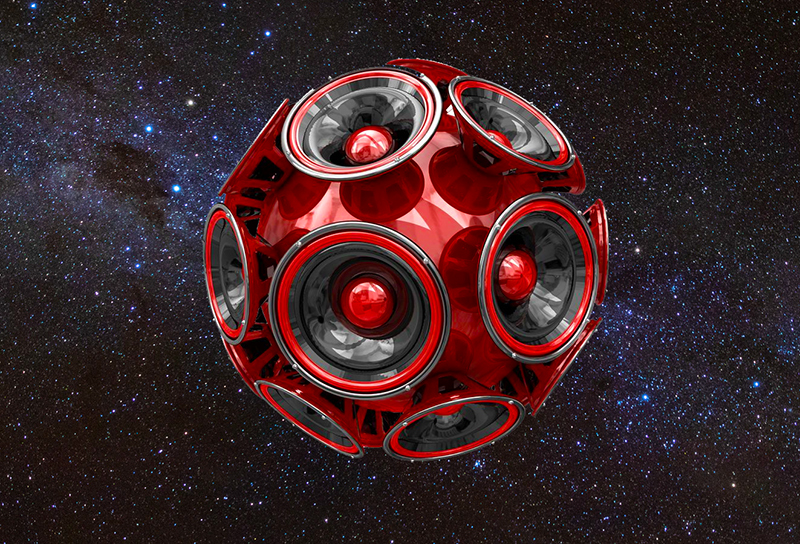
How does it stack up? Just based on the sensitivity of each driver and how much power is available for it, the cone driver will produce 131.5 dB and the compression driver will produce 132.5 dB. That’s a pretty good match. We could round it off and say the loudspeaker can do 132 dB across it’s bandwidth.
However, let’s take a closer look. When we load the cone driver into a ported box (which is what most active loudspeakers use) tuned to 50 Hz, the sensitivity drops to about 94 dB at low frequencies, which means a direct hit on our maximum SPL rating – it drops to 127 dB. That’s not good, particularly when competitors are saying their cabinets will do 10 dB more.
It gets worse when we put some hefty bass through the system. Bass ports help drivers over a very narrow bandwidth, where they reduce cone excursion in exchange for air moving in and out of the cabinet. Above the tuning frequency, the driver has to do the work on its own. By 66 Hz, the port action has pretty much stopped, and with 2 KW input, the cone has to move 15 mm one way. While that won’t destroy the driver outright, it won’t sound good – we’re at twice the driver’s Xmax.
If we want to remain within the driver’s linear region, we can only hit 120 dB, which will present huge problems for the marketing team. There will also be problems with the port itself. Even with generously-sized ports (a pair of triangular ports, 4 inches along the short edges), there will be a lot of port compression, where the driver is generating so much pressure that the air in port itself overloads and begins to experience turbulence.
To avoid port compression, we need to keep the speed of the air in the port below 34 meters per second as a maximum. Here, the air speed will be around three times that – the port will be seriously compressing and making a lot of extraneous noises. This results in the loss of even more SPL at the bottom end.
One last thing, and it’s big: all of these figures are derived in half-space, meaning that the loudspeaker is positioned on the floor or against a wall, which provides reinforcement for the lower midrange and bass frequencies.
Once the loudspeaker is placed on a stand, there will be even lower SPL at those frequencies. Exactly how much depends on the loudspeaker’s positioning, so for now it’s best to table it for now, to be considered another time.
Even without considering the impact at lower frequencies, our example system falls short of the claims made by a good many manufacturers, despite using quality components and plenty of power.
So, how do we get our numbers up? I talked to some manufacturers to find out.
Discussions With Manufacturers
At a recent trade show, I raised this issue with several loudspeaker makers, ranging from smaller entities to larger international ones. Again, I won’t name names, but the bigger ones are companies you’ve heard of.
Manufacturer A is a larger enterprise that was proudly showcasing it’s 10-inch-loaded line array element, accompanied by the bold claim that it’ll produce 136 dB and reach down below 60 Hz. Naturally, I was interested. There must be some magic going on since our own loudspeaker’s top-of-the-line 12-inch cone driver is stuck at a paltry 132 dB.
